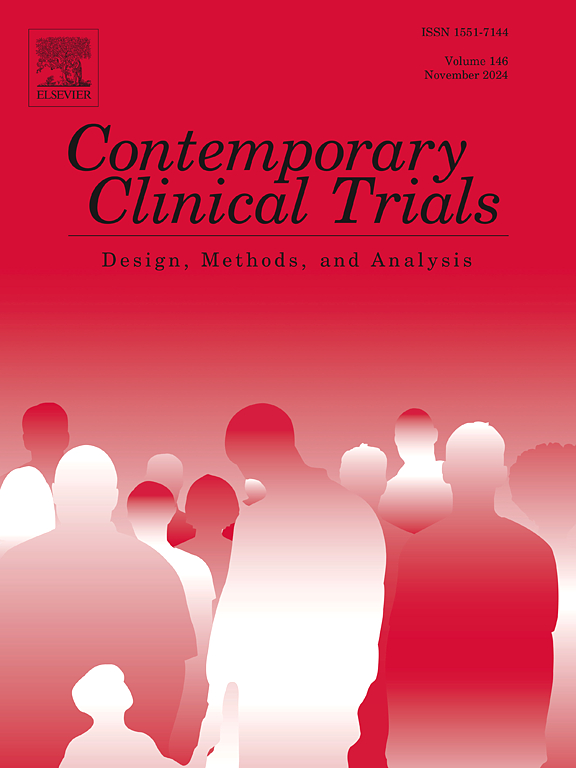The use of virtual rehabilitation Augmented Reality (AR) exergames for patients with osteoporosis to improve balance, muscle strength and confidence: Study design for a clinical trial
IF 1.9
3区 医学
Q3 MEDICINE, RESEARCH & EXPERIMENTAL
引用次数: 0
Abstract
Osteoporosis is a major bone disease, affecting more than 200 million people globally. Physical exercise is a powerful non-pharmaceutical fracture prevention strategy for people with osteoporosis or those at risk of falls. However, the participation in and adherence to an exercise regimen by older adults is often low due to a lack of motivation, a fear of falling, safety and/or cost. Despite the potential of Augmented Reality (AR) exergames to enhance engagement, motivation, and accessibility in rehabilitation, there is a notable lack of clinical research on their use for osteoporosis management.
This study protocol details a partially randomised controlled clinical trial investigating the feasibility and effectiveness of AR-exergames for osteoporosis rehabilitation. We designed four exergames using AR and a body-tracking camera, providing real-time feedback. Based on power analysis, a total of 50 participants were expected after satisfying the inclusion criteria. Forty-eight women (aged 60–86) were enrolled and assigned to the control/intervention training groups. Participants assessment at baseline and at the end of the 6-weeks training included muscle strength, flexibility, balance and pain.
This clinical trial is designed to evaluate whether novel AR exergame-based training has significantly greater effects on physical (i.e., muscle strength, balance, flexibility) and affective (i.e., pain) outcomes compared to traditional training programmes. Findings from this trial provide critical insights into the feasibility and effectiveness of immersive, technology-enhanced rehabilitation for osteoporosis management. Key lessons highlight the importance of diverse recruitment strategies, flexible yet structured scheduling, and efficient resource allocation to improve trial efficiency and participant engagement in future studies.
骨质疏松症患者使用虚拟康复增强现实(AR)运动游戏来改善平衡,肌肉力量和信心:临床试验的研究设计
骨质疏松症是一种主要的骨骼疾病,影响着全球2亿多人。对于骨质疏松症患者或有跌倒风险的人来说,体育锻炼是一种有效的非药物预防骨折的策略。然而,由于缺乏动力、害怕跌倒、安全和/或成本,老年人参与和坚持锻炼方案的比例往往很低。尽管增强现实(AR)游戏在增强康复的参与、动机和可及性方面具有潜力,但其在骨质疏松症治疗中的应用却明显缺乏临床研究。本研究详细介绍了一项部分随机对照临床试验,调查AR-exergames治疗骨质疏松症康复的可行性和有效性。我们设计了四个使用AR和身体跟踪摄像头的运动游戏,提供实时反馈。根据功率分析,在满足纳入标准后,预计共有50名参与者。48名妇女(60-86岁)被纳入对照组/干预训练组。参与者在基线和6周训练结束时的评估包括肌肉力量、柔韧性、平衡和疼痛。本临床试验旨在评估与传统训练方案相比,新型AR运动训练是否对身体(即肌肉力量、平衡、灵活性)和情感(即疼痛)结果有更大的显著影响。这项试验的结果为骨质疏松症管理的沉浸式技术增强康复的可行性和有效性提供了重要的见解。关键的经验教训强调了多样化的招聘策略、灵活而结构化的日程安排和有效的资源分配对提高试验效率和参与者参与未来研究的重要性。
本文章由计算机程序翻译,如有差异,请以英文原文为准。
求助全文
约1分钟内获得全文
求助全文
来源期刊
CiteScore
3.70
自引率
4.50%
发文量
281
审稿时长
44 days
期刊介绍:
Contemporary Clinical Trials is an international peer reviewed journal that publishes manuscripts pertaining to all aspects of clinical trials, including, but not limited to, design, conduct, analysis, regulation and ethics. Manuscripts submitted should appeal to a readership drawn from disciplines including medicine, biostatistics, epidemiology, computer science, management science, behavioural science, pharmaceutical science, and bioethics. Full-length papers and short communications not exceeding 1,500 words, as well as systemic reviews of clinical trials and methodologies will be published. Perspectives/commentaries on current issues and the impact of clinical trials on the practice of medicine and health policy are also welcome.

 求助内容:
求助内容: 应助结果提醒方式:
应助结果提醒方式:


